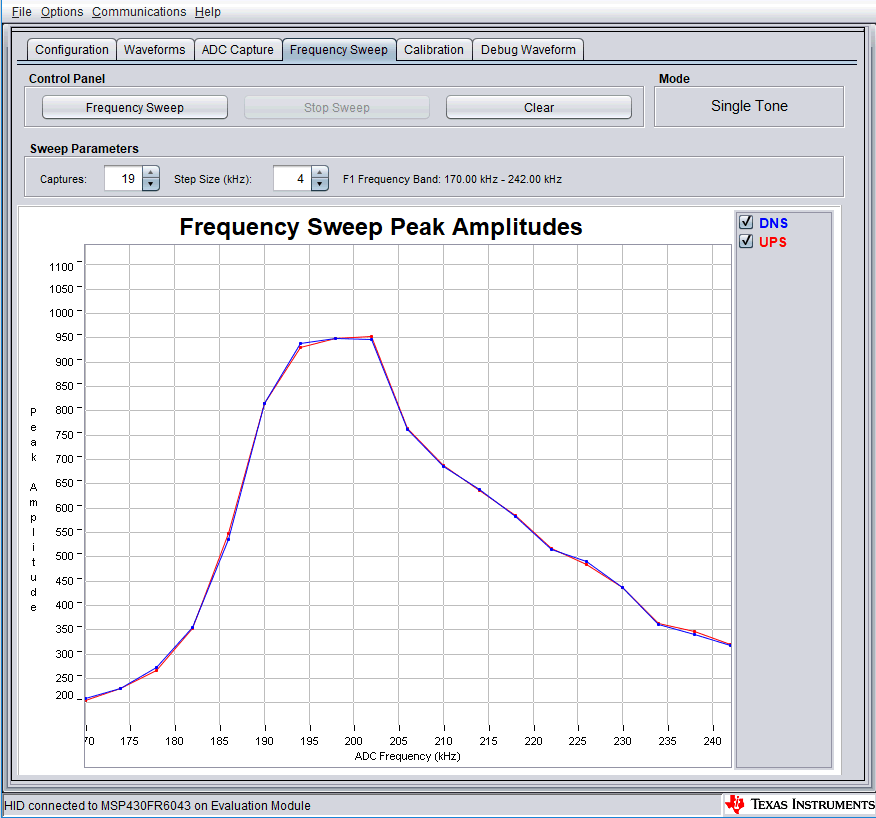JAJU680A January 2019 – July 2022
- 概要
- Resources
- 特長
- アプリケーション
- 5
- 1System Description
- 2System Overview
- 3Hardware, Software, Testing Requirements, and Test Results
- 4Design and Documentation Support
- 5About the Authors
- 6Revision History
3.1.3.1 Frequency Characterization of Transducer and Meter
Different meters and transducers have different responses; consequently, it is important to characterize the frequency response of the meter to obtain an optimal performance.
The MSP430 Ultrasonic Sensor Design Center Tool GUI provided in this reference design can be used for this purpose. The GUI includes a Frequency Sweep panel. Ultrasonic Sensing Design Center User's Guide describes the detailed operation, but a brief description is provided here for completeness.
To start a sweep, do the following:
- Set the F1 Parameter on the Configuration tab, and then set the Number of Captures parameter in the Frequency Sweep tab to determine the range in which to sweep.
- Click on the Frequency Sweep button and navigate to the desired location in the file system where the Frequency Sweep data is saved, and then click the Save button.
The Frequency Sweep tool helps to determine at which transducer excitation frequency the ADC capture achieves the maximum amplitude. The frequency at which the peak amplitude is reached should be used as the new F1 parameter to achieve the strongest signal for the meter configuration. For the example, in Figure 4-11 a value of 170 to 180 should be placed into the F1 parameter.
 Figure 4-11 Frequency Response Test Results
Figure 4-11 Frequency Response Test Results